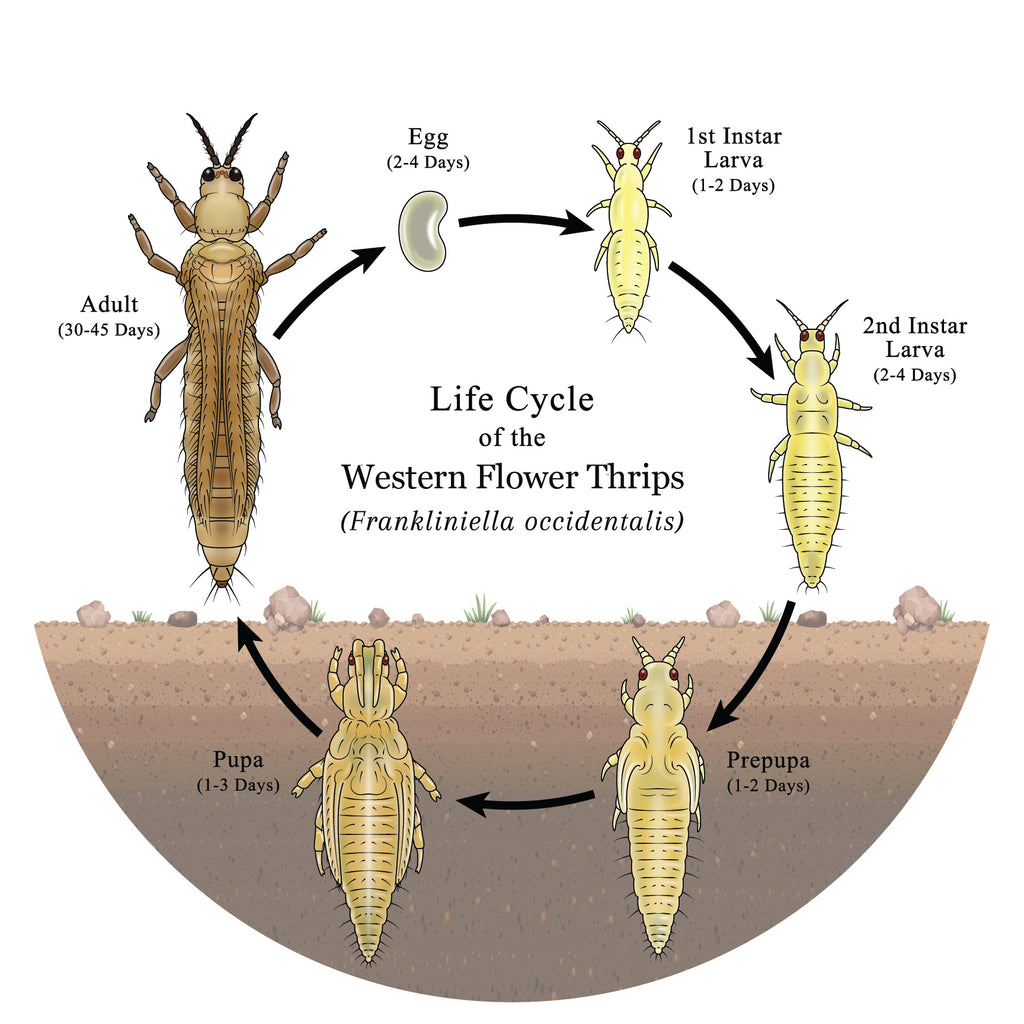Thrips Control and Intraguild Predation

Are you familiar with different species of Thrips?
Have you ever wondered if beneficial bugs are compatible?
Will releasing more than one biocontrol agent at a time lead to them eating each other?
This week we are going over various species of thrips, identification, and control.
The most common species of Thrips in North America are Western Flower Thrips (Frankliniella occidentalis) a pest found in both vegetable and ornamental crops, Onion Thrips (Thrips tabaci) usually a problem only in vegetable crops, and Chili Thrips (Scirtothrips dorsalis) which is a significant global pest of ornamental, vegetable, and fruit crops. While these three species of Thrips are pests that damage your crop, it is important to note that there are predatory Thrips, such as the Sixspotted Thrips, Banded Thrips, and Franklinothrips. These species will feed on pests and actually help your crops! Lowering pesticide usage through using biocontrol agents can boost these beneficial populations.
Thrips Damage, Life Cycle, and Control
Thrips Identification
It is imperative to identify the species of thrips that are causing damage to your plants. Certain thrips species can put a halt on plant exportation (Chili thrips) and some methods of control may differ for some species. Onion thrips and chrysanthemum thrips are both susceptible to spinosad containing products while Western Flower Thrips are not. Echinothrips is a species that does not pupate in the soil so Stratiolaelaps will not be as effective for control.
Check out this link for more information on identification. This key was developed by Dr. Sarah Jandricic, currently the Greenhouse Floriculture IPM Specialist for the Ontario Ministry of Agriculture, Food and Rural Affairs (OMAFRA).
What is Intraguild Predation?
Intraguild Predation (IGP) occurs when one biological control agent feeds on another biological control agent.
Orius insidiosus
Amblyseius cucumeris or swirskii
Dalotia coriaria
Application rate: 0.1 to 0.5 per sqft
Stratiolaelaps scimitus
Stratiolaelaps scimitus ‘Womersley’ (formerly Hypoaspis miles) is a native species of soil dwelling mite, which feeds on small insects and mites (e.g., springtails, root mealybug crawlers, spider mites). They move rapidly over the soil surface. Stratiolaelaps are used primarily to control young larvae of fungus gnats in the soil or planting media. To control high numbers of fungus gnats, use of Stratiolaelaps can be integrated with insect parasitic nematodes (e.g., Steinernema spp.) or Bacillus thurinigiensis israelensis (BTI), both of which control the larval stage of fungus gnats. They also help control soil stages of thrips and may account for up to 30% of thrips control.
Application rate: Roughly 25,000 per 1000 square feet of soil medium





Leave a comment